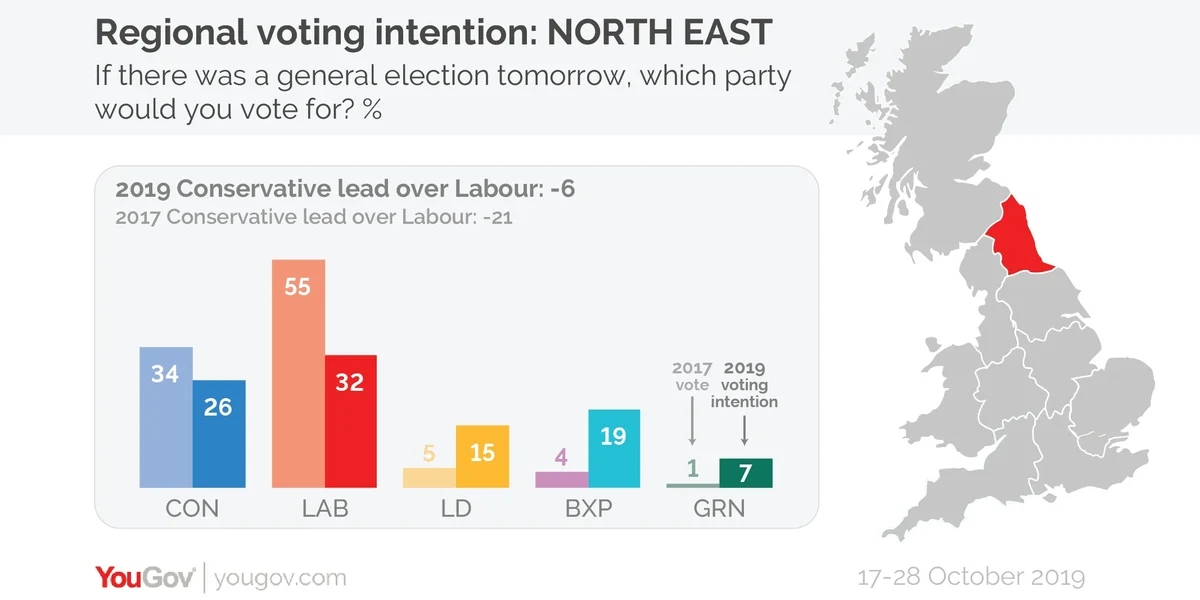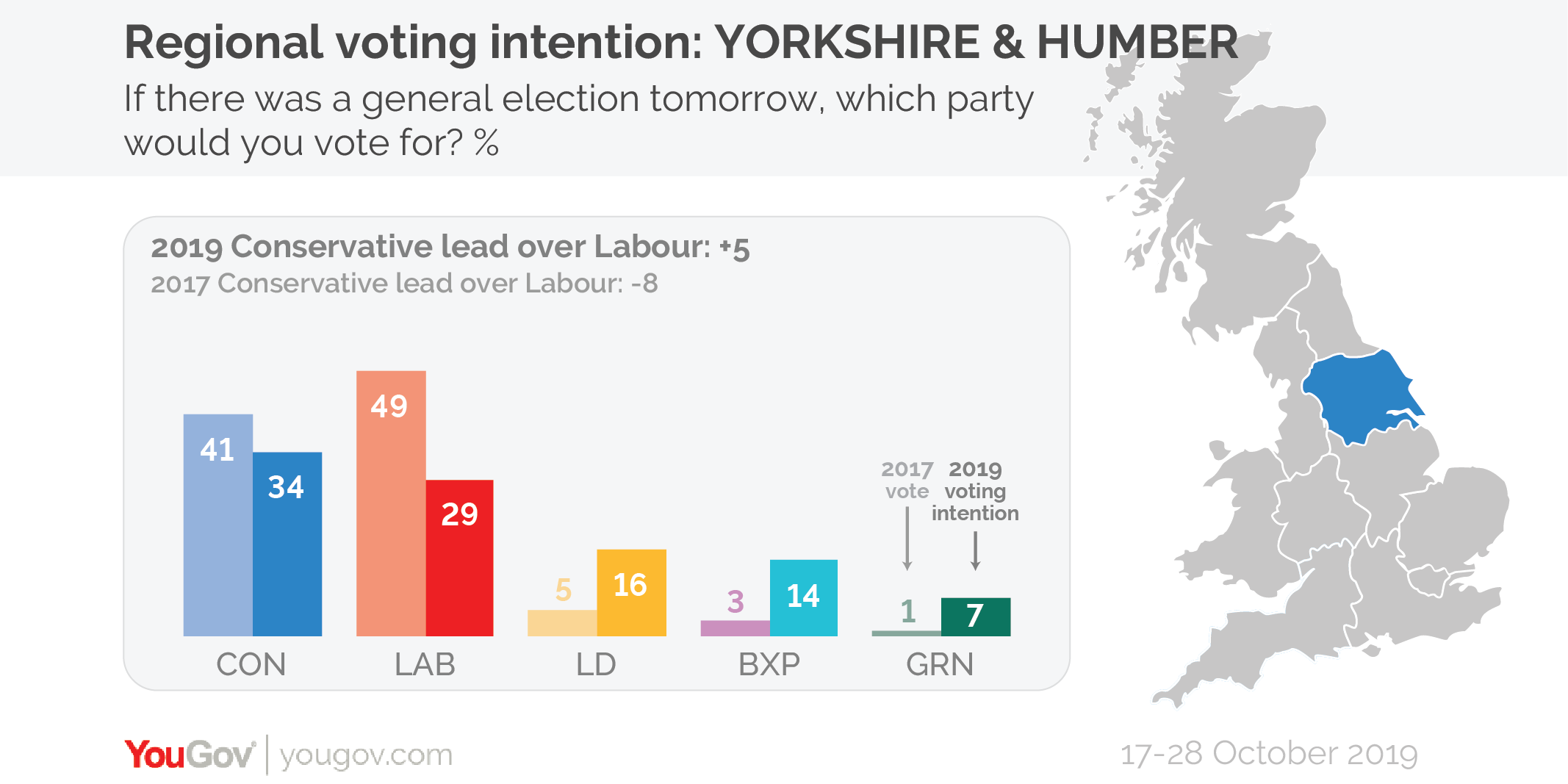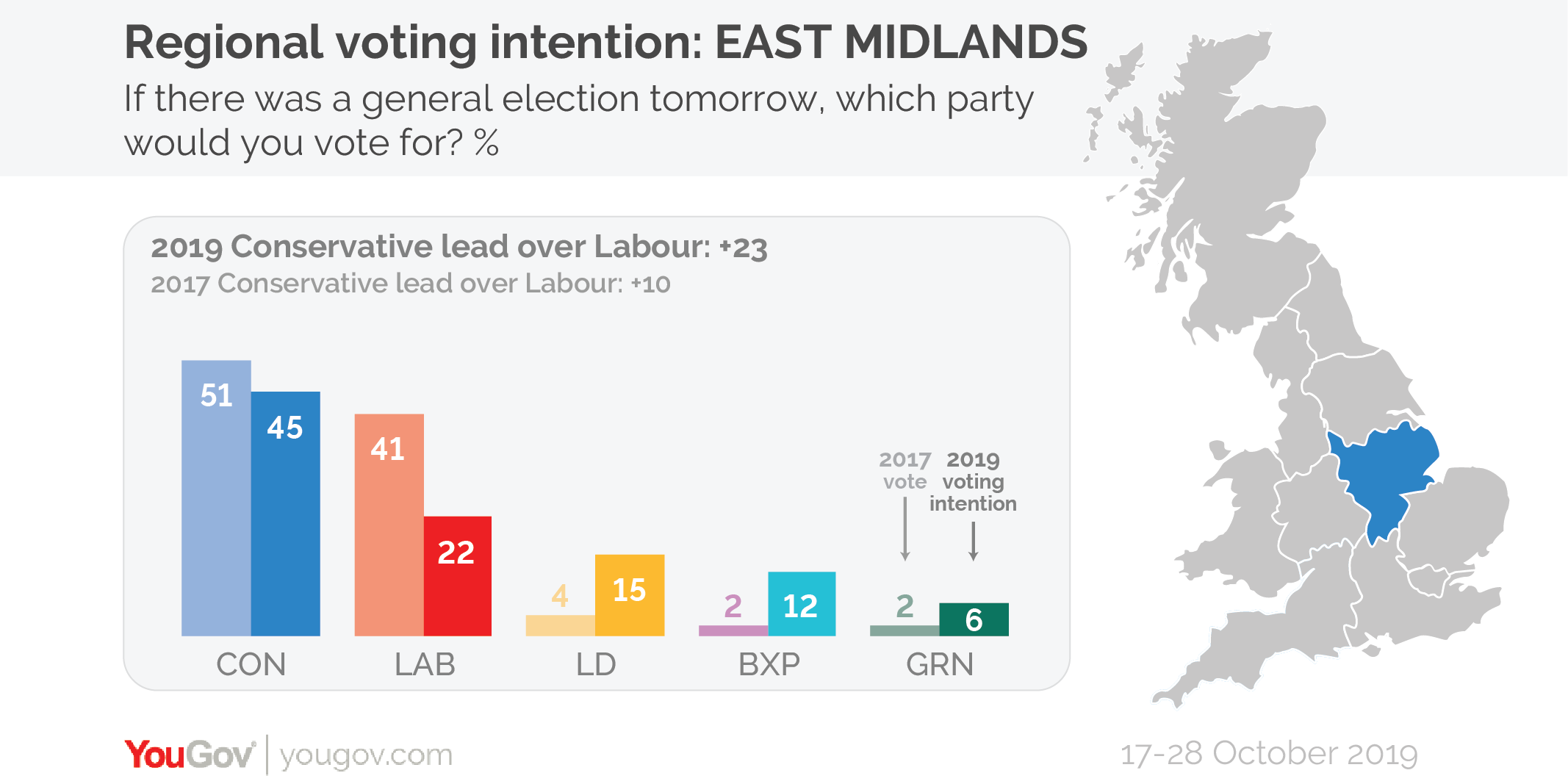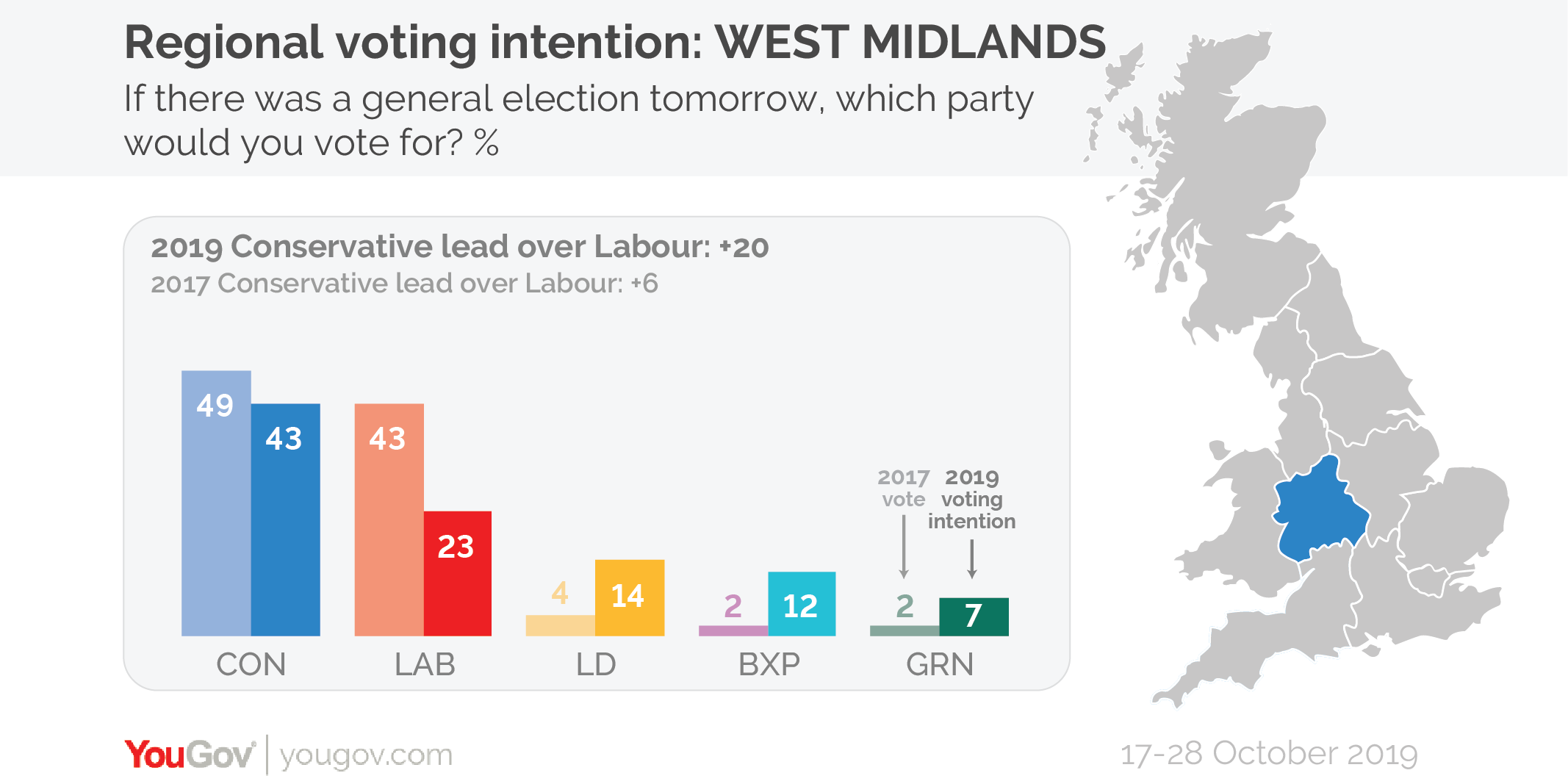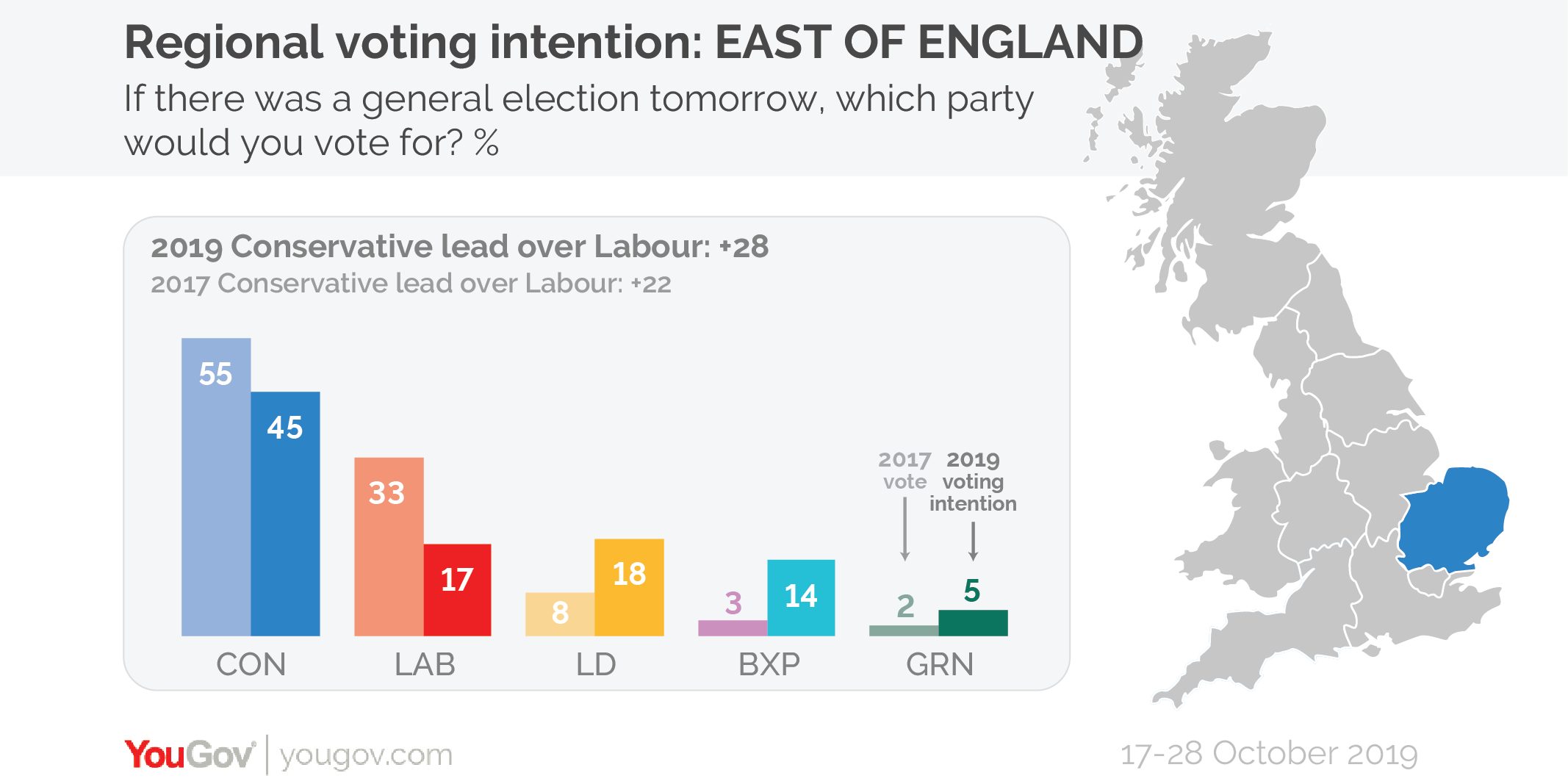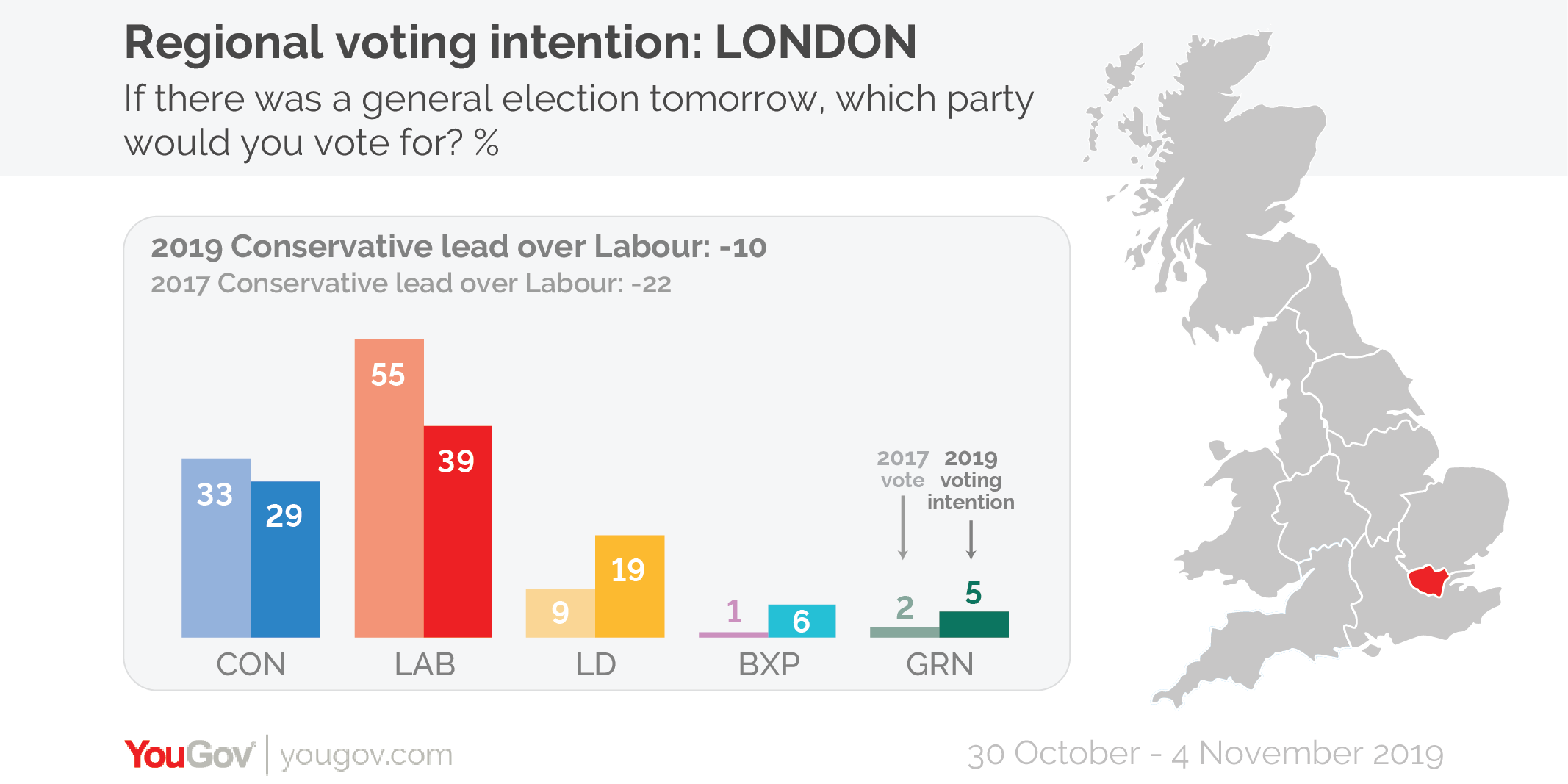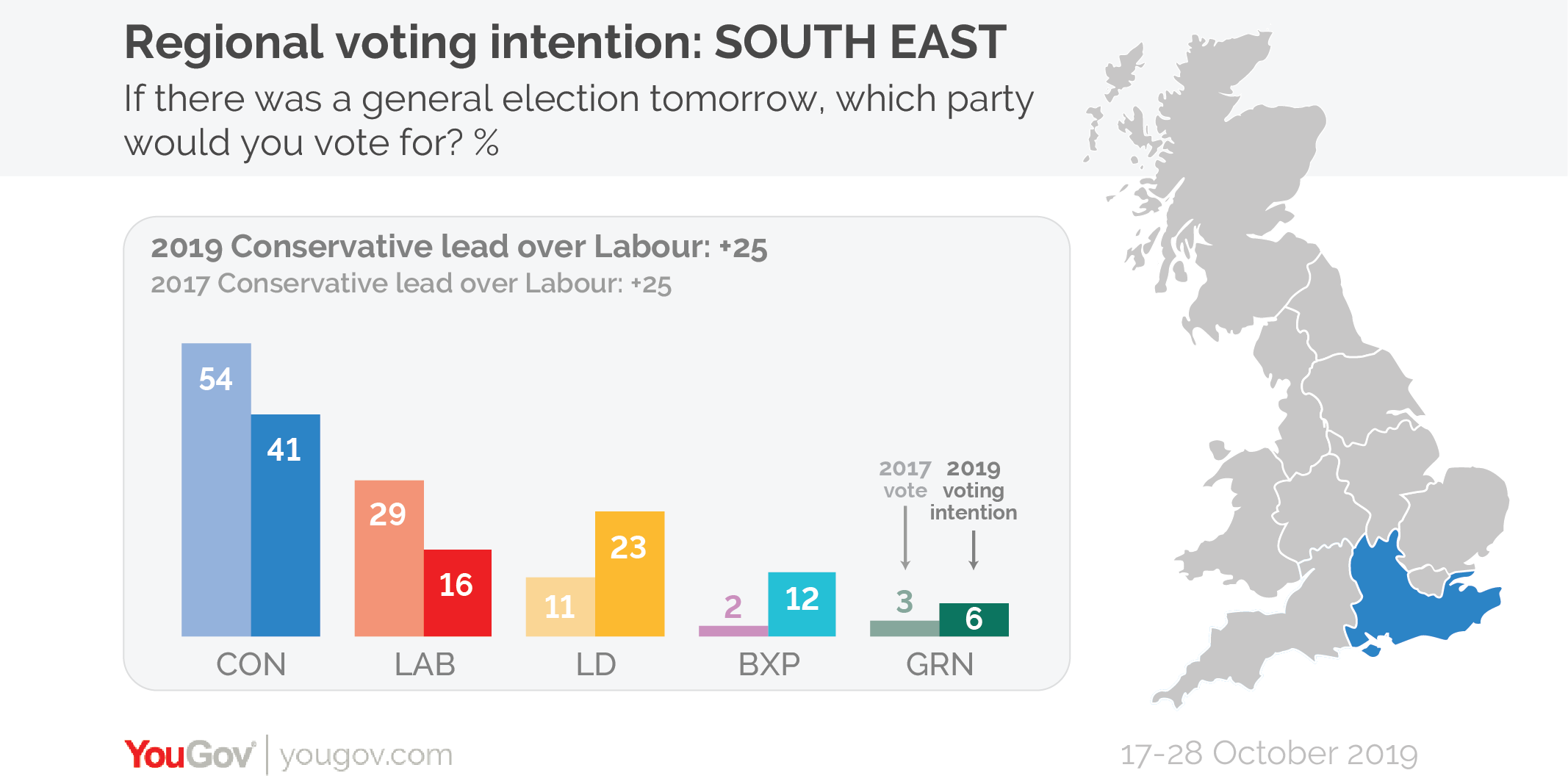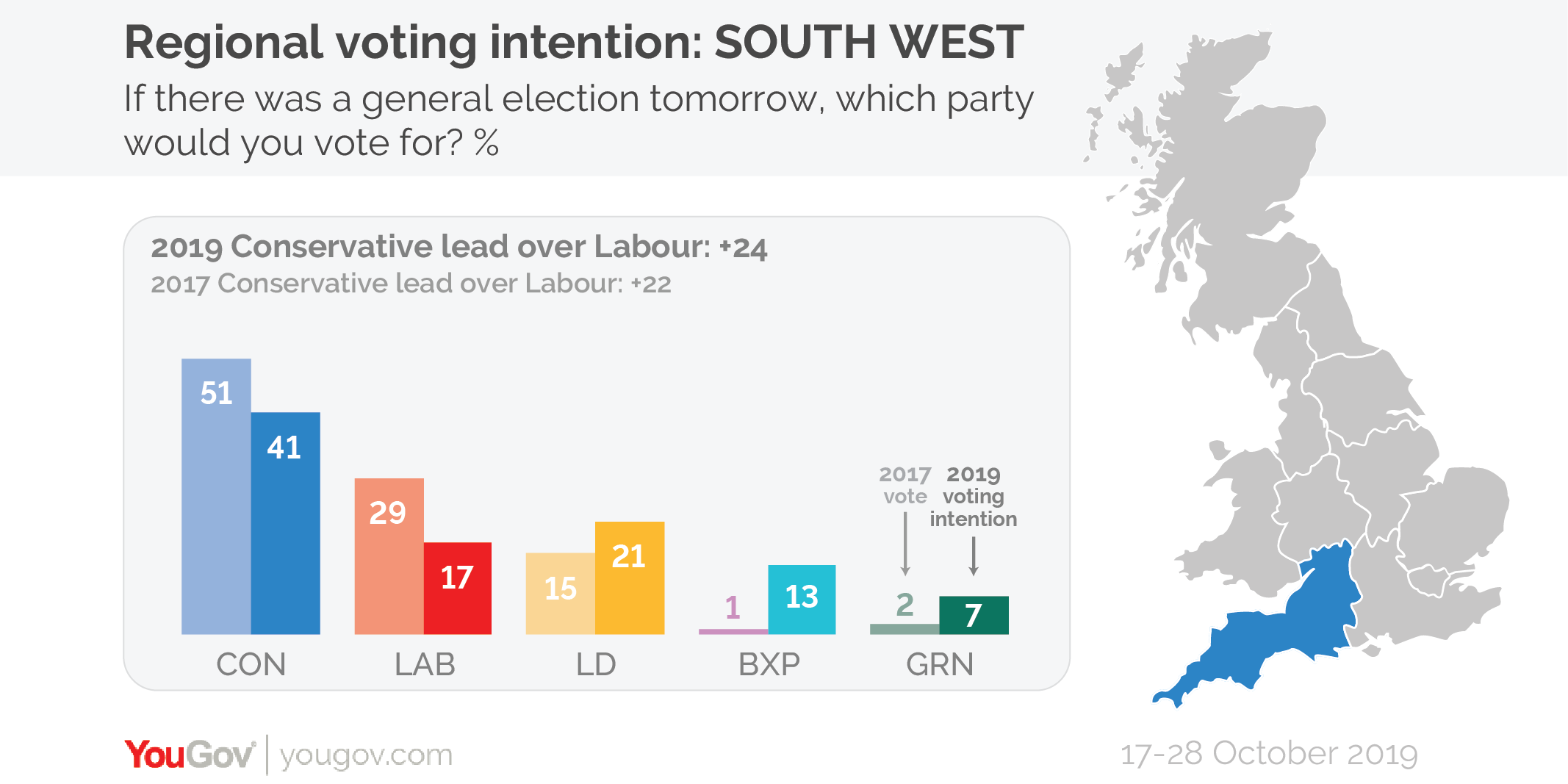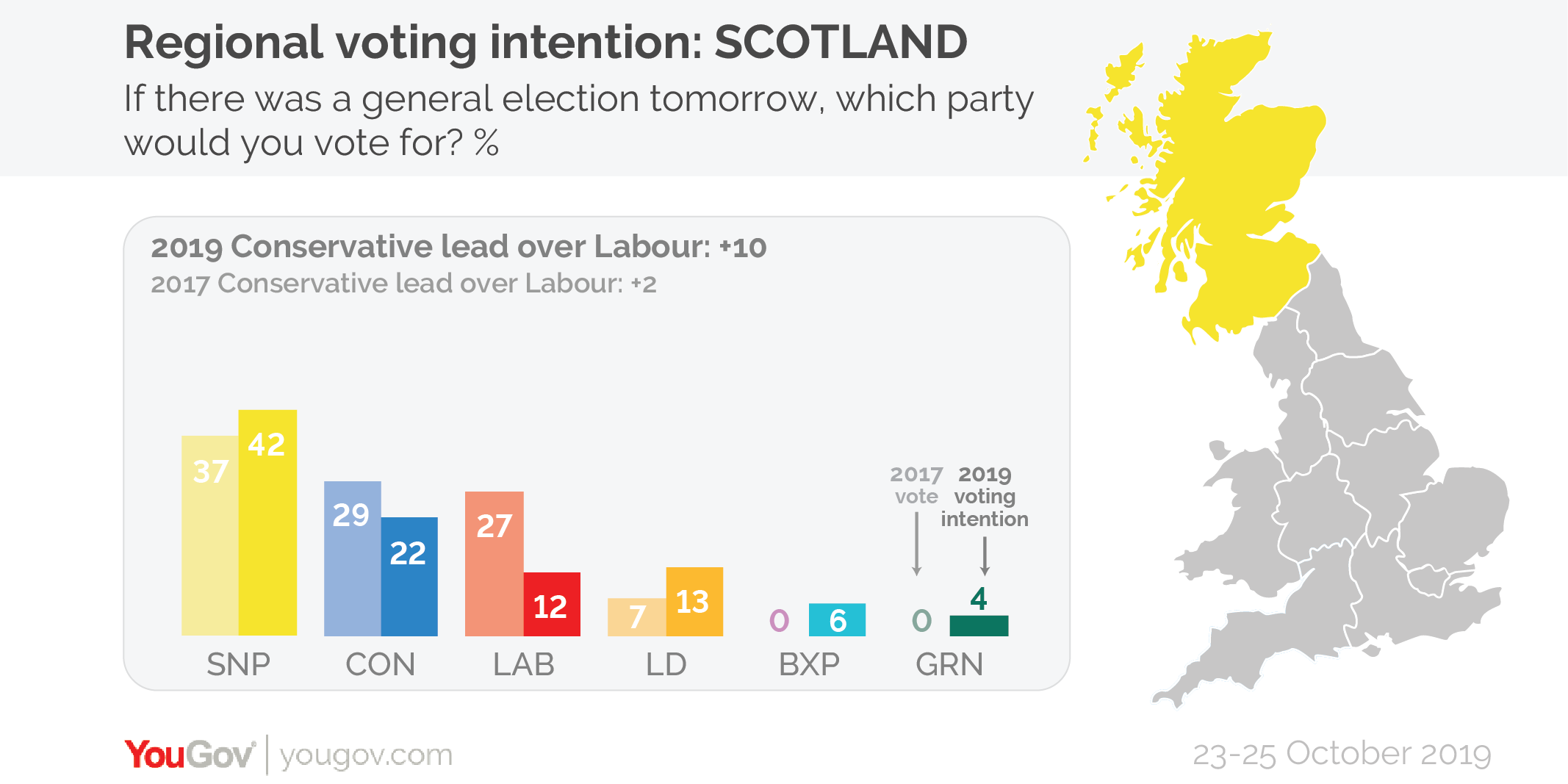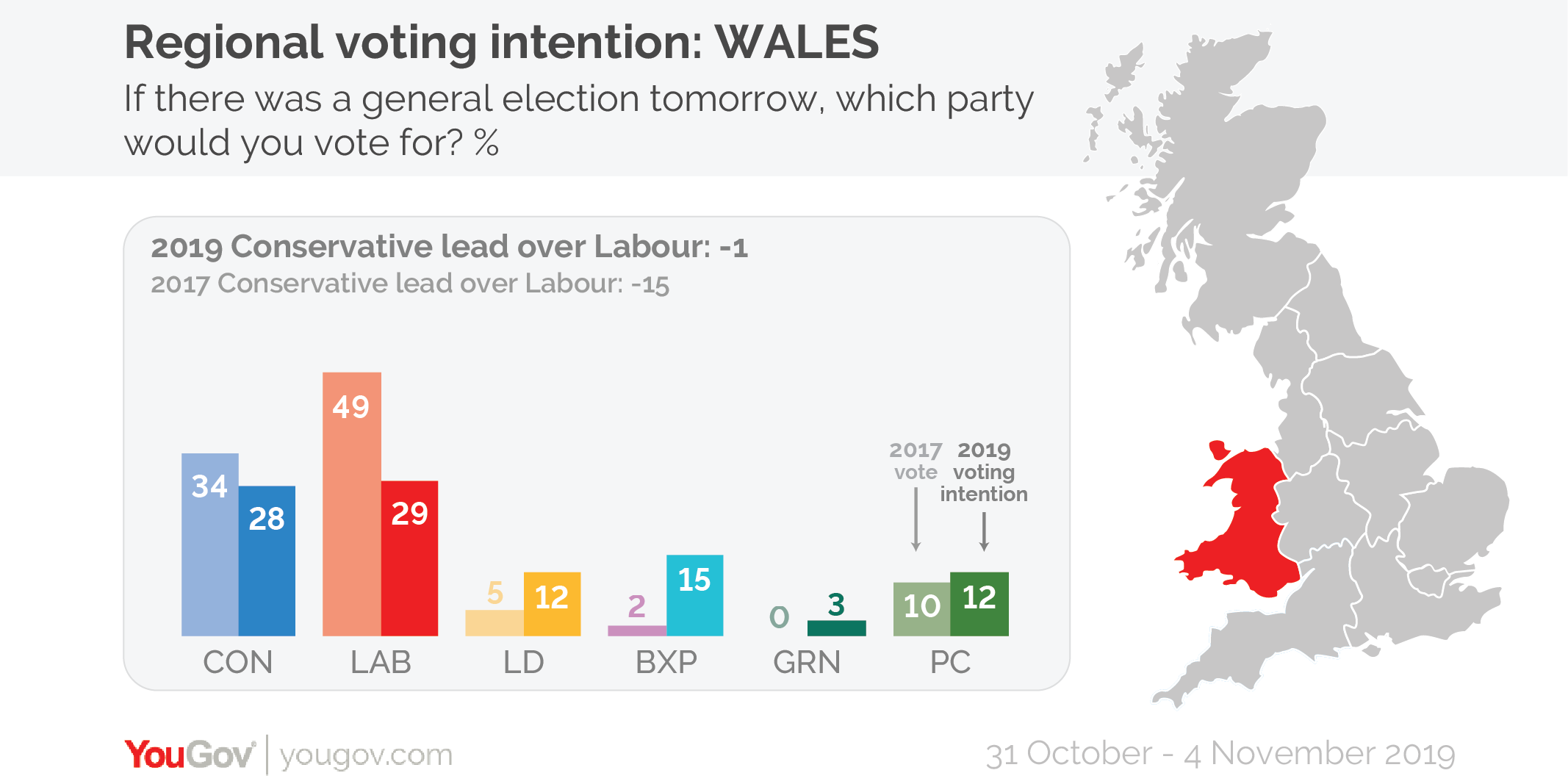With the campaigns getting underway YouGov reveals how each region of Britain intends to vote at the general election
The fieldwork, conducted from 17 October – 4 November, shows voting intention for the main two parties is down everywhere, with both Labour and the Conservatives experiencing dramatic slumps in several regions. At the same time the Lib Dems have seen double-digits increases in most regions, as have the Brexit Party compared to UKIP’s performance in 2017.
North East
Despite having taken a full 55% of the vote in the North East in 2017, Labour’s vote share has since fallen to just a third now (32%). People in the North East are more likely to say they will vote for the Brexit Party than in any other region, at 19%.
North West
The Labour vote has taken its hardest hit in the North West, with support for the party falling by a massive 25 percentage points to 30% since 2017. Worse still for Labour, this now puts them behind the Conservatives (33%) in a region the party considers its own.
Yorkshire and Humberside
The Tories have reversed the eight point Labour lead in the region to a five point lead in their favour. The Labour vote share is down from almost half in 2017 (49%) to just 29% now, while the Tories have seen a more modest decrease from 41% to 34%.
East Midlands
While you might traditionally associate the South with the Conservative heartland, the 45% of the vote the Tories hold in the East Midlands is their joint highest (alongside the East of England). This figure is actually down from 51% 2017, although Labour’s vote share has plummeted nineteen points over the same time period to just 22%.
West Midlands
While the Conservatives led Labour by 49% to 43% at the 2017 general election, the collapse in Labour support in the region now sees the Tories holding a twenty point lead over their rivals.
East of England
The 45% of East Anglians saying they will vote for the Conservatives is the joint highest rate in the country, although this is down ten percentage points since the last election. Nevertheless, Labour’s proportion of the vote has fallen further still, from 33% to 17%, with the Lib Dems now actually second place in the region (18%).
London
The 39% of the vote Labour holds in London is their highest in any region, as is their 10 point lead over the Conservatives. Nevertheless, this represents a sixteen point slump for Labour in the capital since 2017, and the fact that the Conservative vote share has fallen by a much more modest four percentage points (to 29%) means that Labour may find it hard to hold on to their marginal seats, as Chris Curtis outlines.
South East
In spite of taking their biggest knock in the South East, suffering a thirteen point vote share drop to 41%, the Tories still maintain a commanding lead over Labour in the region, who themselves have seen their vote share fall to 16% from 29%. This is the only region of the country where the Labour vote share has not fallen farther than the Conservatives’.
A 2018 YouGov study detailed how demographic change in the South East, caused by young well-educated people moving out of London, was weakening the Tories’ hold on the region. At the time it looked like this would benefit Labour, but with the collapse in support for Corbyn’s party it seems that the benefits could accrue to the Lib Dems. Jo Swinson’s party has seen their vote share double from 11% to 23%, the highest rate and joint highest increase for the party in the country.
South West
The Conservatives continue to hold a mighty lead in the South West, at 41% to the Lib Dems’ 21% and Labour’s 17%. While the Lib Dem vote is up from 15% in 2017, it is still well below historical levels: between 1997 and 2010 the party held more than 30% of the vote.
Scotland
The SNP continue to dominate in Scotland, having actually increased their share of the vote from 37% in 2017 to 42% now. Tory support has fallen seven points to 22%, while Labour support has collapsed from 27% to just 12%, meaning the party is currently in fourth place behind the Lib Dems (13%). Should this figure remain the same on election day it will be the worst Labour result in Scotland for more than 100 years.
Wales
Despite Labour winning almost half the vote in 2017 to the Tories’ third, the two parties are now neck and neck at 29% and 28% apiece. As with Scotland, should Labour’s vote share remain unchanged it would be their worst result in more than a century.
The Lib Dems and Plaid Cymru both find themselves on 12% of the vote, and the Greens on 3%. An electoral pact in 11 of Wales’ seats between these three parties is more likely to safeguard existing seats than to win members any extra ones, with the possible exception of Ynys Mon, which is currently projected to be a three-way tussle between the Tories, Labour and Plaid.
See the full results for England (except London), London, Scotland and Wales

